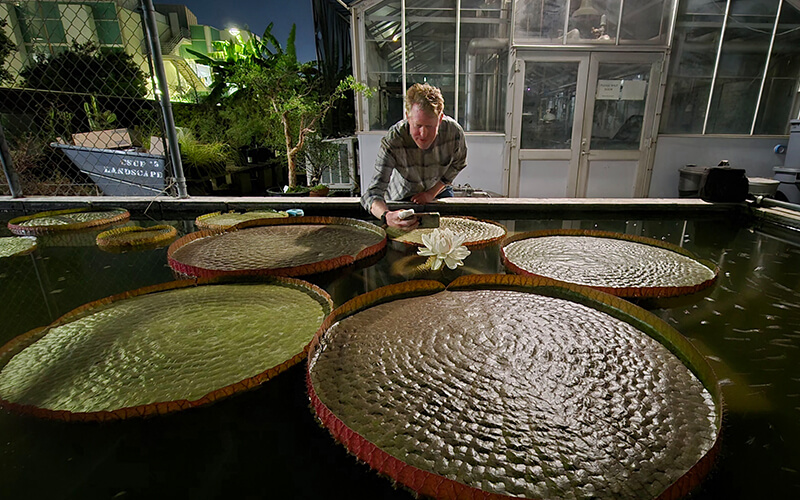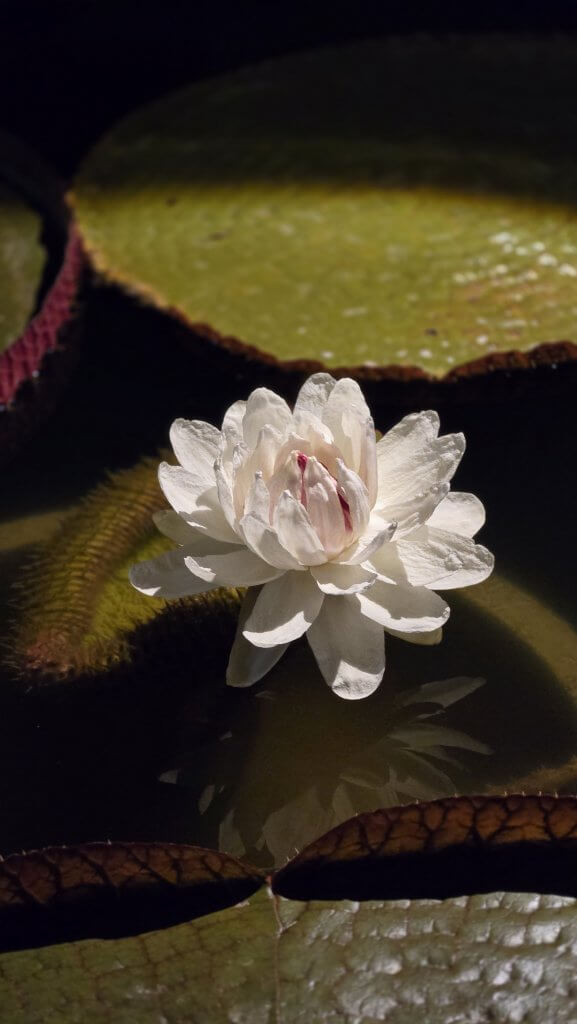
For the first time since its inception in 1963, the Biology Greenhouse Complex at Cal State Fullerton has a rare flower in bloom, the Victoria amazonica water lily.
The second largest water lily in the world, this plant is native to tropical regions in South America, specifically in Guyana and the Amazon basin, but it is not always easy to grow in Southern California.
For the past three months, Edward Read, CSUF greenhouse manager, has been coaxing the lily into bloom and this past week, it did just that. After three previously failed attempts since 2012 to grow the Victoria amazonica, Read cracked the code this year.

With seed provided by Longwood Gardens in Pennsylvania, and the assistance and expertise of colleagues Chris Barnhill, former curator for the Arboretum and Botanical Garden at Cal State Fullerton, and Dylan Hannon from Huntington Botanic Gardens, Read provided the perfect environment conducive to the flower’s growth.
“The temperature of the water, the clay soil and the compost all worked together to make a rich environment for this plant to thrive,” said Read.
Growing inside a makeshift pond created by cement cinder blocks outside of the greenhouse, the lily grew multiple, large, round, thorny leaves with the largest spanning 37 inches in diameter.
Read is known for his cultivation of rare and exotic plants at Cal State Fullerton. Numerous times over the last decade, he has displayed the rare corpse flower, Amorphophallus titanum, one of the largest inflorescences in the world, on campus.
“I like new challenges,” said Read. “After I completed growing the corpse flower and had about two dozen blooms, I needed another challenge. I thought growing this water lily would be a good one not only because its technically difficult, but also because I wanted to grow something rare and beautiful for the students to see.”
The flowers of this lily only last about two days before they drop back down below the surface of the water. Those interested in seeing the flower this summer can email Read at eread@fullerton.edu to make an appointment.
When asked what he plans to take on for his next botany challenge, Read said, “I think I’ll try growing more Synsepalum dulcificum, also known as the ‘miracle fruit’ from West Africa. After eating it, sour foods taste sweet.”
To watch a time-lapse video of the Victoria amazonica water lily blooming at CSUF and see other amazing plants at the greenhouse, check out @csufgreenhouse on Instagram.
To donate to the CSUF greenhouse to support research and development of other rare plants, visit the giving website and enter “Biology Greenhouse Fund.”